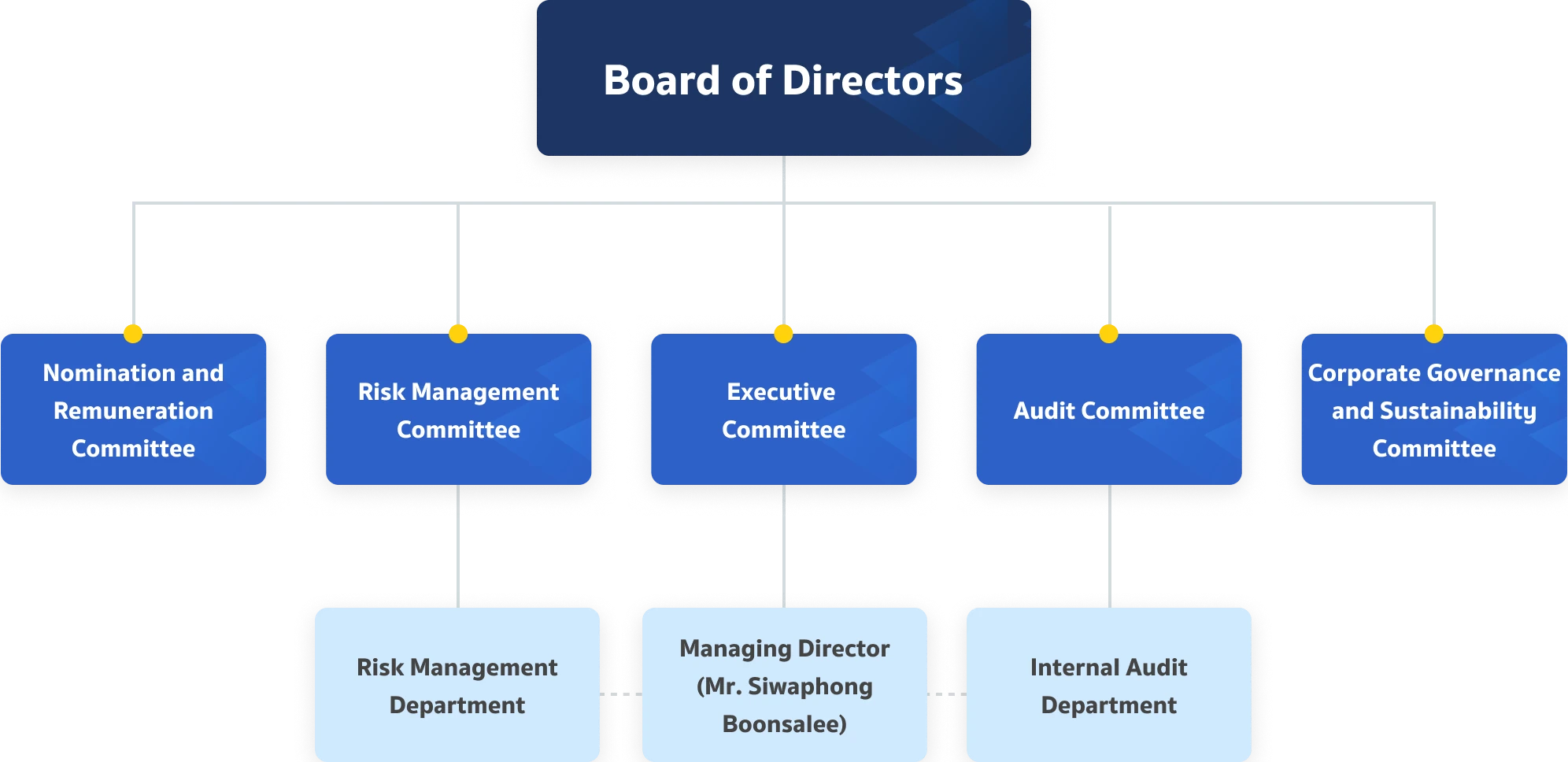
Sustainability Governance Structure
As of December 31, 2024, the company's management structure consists of a board of directors and five sub-committees, which includes nomination and remuneration committee, risk management committee, executive committee, audit committee, and corporate governance and sustainable development committee, as follows:
Duties and Responsibilities
1
The Board of Directors
The Board of Directors is responsible and obligated to collaborate with management to achieve sustainable development by developing visions, strategies, policies, and operational directions, as well as supervising management's work in accordance with good corporate governance policies. It encourages directors to follow corporate responsibility principles and treat all stakeholders fairly.
2
The Nomination and Remuneration Committee
The Nomination and Remuneration Committee responsibilities and duties include ensuring sustainability, reviewing, analyzing, and nominating individuals for director and executive positions. Nominate directors with extensive knowledge, skills, and experience, as well as adequate working time, to increase efficiency and the proportion of independent directors. To ensure checks and balances between directors and management in carrying out their responsibilities, create succession plans, and establish standards and forms of compensation for directors and executives in order to provide feedback to the board of directors.
3
The Risk Management Committee
The Risk Management Committee is responsible and obligated to ensure sustainability, to assist the Board in effectively carrying out its risk management responsibilities, to address significant risks, ESG risks, and emerging risks, and to foster a risk management culture.
4
The Executive Committee
The Executive Committee is responsible for ensuring operational sustainability and serving all stakeholders in accordance with the company's vision, strategies, and policies in order to be a good corporate governance organization.
5
The Audit Committee
The Audit Committee is responsible and accountable for ensuring the sustainability. The audit committee can independently screen critical issues related to the company's audit and have confidence in financial reporting, internal control and audit, legal compliance, risk management framework and processes, auditors, and other activities. Transactions that may involve conflicts of interest, such as reporting to the board of directors or providing opinions/suggestions, will be performed by the internal audit department.
6
The Corporate Governance and Sustainability Committee
The Corporate Governance and Sustainability Committee is responsible for supporting operations and advising the board of directors on good corporate governance and business ethics, promoting an organizational culture of honesty and integrity to build trust with customers and stakeholders, and monitoring and ensuring continuous and tangible implementation in accordance with global standards. The operational structure is presented as follows:


